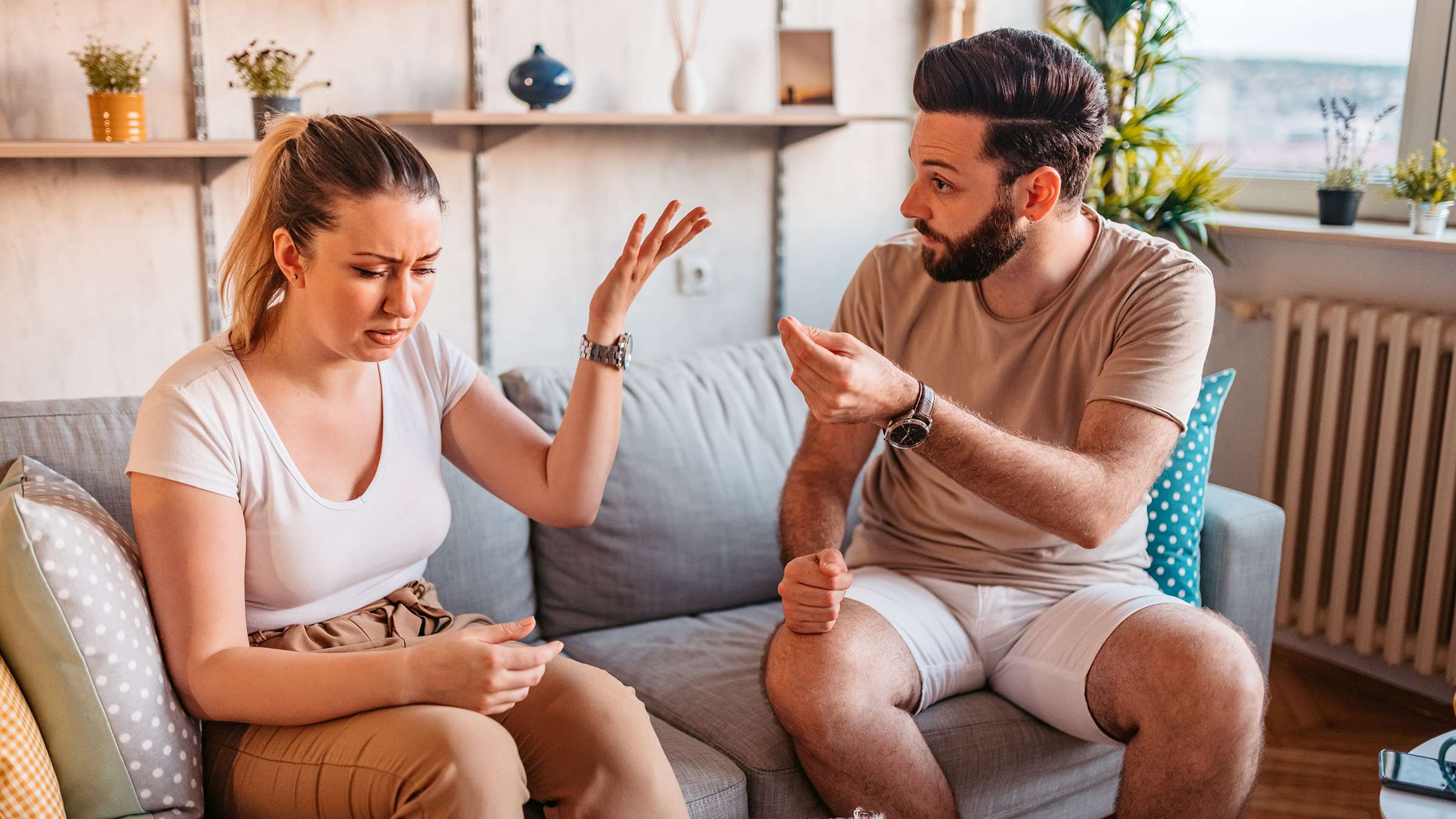 Does your dog get scared during thunderstorms or fireworks? Do they suffer from separation anxiety? Does hearing noises outside make them nervous? Turning on some music or some form of white noise for your dog can help relieve their stress.
Does your dog get scared during thunderstorms or fireworks? Do they suffer from separation anxiety? Does hearing noises outside make them nervous? Turning on some music or some form of white noise for your dog can help relieve their stress.
Recent studies have shown that playing music reduces stress in dogs at animal shelters, with less barking, lower respiratory rates, and lower levels of the stress hormone cortisol.
This shouldn’t come as too much of a surprise, as the effect music has on human emotions has been a subject of study for quite some time. Music therapy is used as a natural anti-anxiety remedy and to help with sleep disorders, and it’s easy to use the same technique for your puppy or adult dog.
What Kind of Music is Calming for Dogs?
You can use music to help your dog feel calmer and encourage relaxation — but wait! Certain music genres have been proven to be more soothing for your dog than others. Reggae and soft rock are the most relaxing music for dogs in shelters, and classical music also helps calm down dogs in stressful environments. So if you’re getting tired of another Mozart symphony, turn on some Bob Marley.
Variety within the genres mentioned above seems to be the most effective for anxiety and stress relief. After about 7 days of the same kind of music, dogs get used to the background noise and begin to show more stress. Mix up which stations you leave on for your dog, letting your dog enjoy some Bob Marley, Fleetwood Mac, and Mozart.
Follow Preventive Vet on Spotify for different pet-centric playlists. Here’s a Soft Rock for Dogs playlist of our favorite mix of songs to help de-stress your pet:
There is even music composed specifically for dogs, whether it’s for generally anxious dogs, those with separation anxiety, fear of thunder, or for helping a new puppy sleep through the night. Watch how music artist Gnash wrote and recorded a song for his anxious dog Daisy:
Canine Lullabies and Through a Dog’s Ear are two of the most popular recordings for puppies, anxious dogs, or dogs scared of loud noises, and YouTube also offers many different options for calming dog music. Dogs might have different preferences but the length of the musical notes, simplicity of tones, regular rhythms, and the music’s tempo are the most important calming qualities.
More products are popping up that include calming music to reduce anxiety. The Calmz Anxiety Relief System is one such product, which claims to deliver acoustic and vibration therapy to reduce anxiety in dogs. If you want to try products like this one, make sure you’re introducing the wearable speaker properly and watching your dog for any signs of stress caused by the vibration of the product. Reviews of the Calmz indicate mixed success. In some reviews, dog owners reported that their dog became more anxious due to the vibration mechanism, the music was too loud for their dog, or that the harness didn’t fit well.
When trying a new treatment for anxiety, always consider whether there is any possibility it could inadvertently make your dog more anxious.
It’s best to work with your veterinary behaviorist, certified dog trainer, or behavior consultant to determine what products will work best for you and your dog.
Calming Music for Senior Dogs
Unfortunately, hearing loss is a normal part of the aging process. With age, a dog can become more sensitive to certain frequencies of sound (middle and high-pitched frequencies) as the nerves in their ears degenerate. High-pitched sounds may startle your senior dog and continuous exposure can cause stress and anxiety, which in turn affects their immune system — the last thing we want for a senior dog!

To help calm your senior dog and provide a respite from sounds that may hurt their ears, put on music that is lower pitched and doesn’t have high-frequency sounds (such as high notes on a piano or flute). ICalmPet has created a soundtrack specifically for senior dogs and their hearing sensitivity, called Elderly Canine.
You may also consider using a sound machine instead of music to create white noise for an older dog. This can give their nervous system a break after being in highly stimulating environments.
Combine Music with Calming Visual Enrichment
Television and videos for dogs are becoming more popular. Not only can these provide extra enrichment when you’re working from home, but they are ideal for when your dog is home alone. I leave on DogTV for my dogs whenever I leave for a few hours, and I like how I can choose between on-demand calming videos or turn on their live channel. Colors and sounds are chosen specifically for dogs, so you may notice that blues and yellows are more prevalent on-screen.

When to Play Calming Music for Your Dog
Your dog can benefit from music in a variety of situations, including:
- During the adjustment period after you first bring home a new puppy or dog.
- Whenever you leave your dog home alone.
*
- When your dog spends time in their crate, puppy zone, or in their safe space.
- During thunderstorms or fireworks.
- Helping a restless puppy or dog fall asleep.
- At the veterinary clinic during exams.
- While riding in the car to help ease travel anxiety.
Pro Tip: If you are planning on leaving music on for a dog that suffers from separation anxiety, you want to make sure you also play it at other times when you are home. You don’t want your dog to learn that when you turn on the music it means you’re leaving, adding another stressful trigger to their anxiety.

Using Music to Help Prevent Barking
If your dog barks at any noise they hear outside, you can play music (or turn on a fan or white noise machine) to help mask the sounds. It’s normal for dogs to alert bark when they hear something outside, and noise masking can be a great management tool. I tend to turn on music or DogTV when I’m working from home, which helps me concentrate as well as keep my dogs from barking.
Masking ambient sounds can lessen the amount of barking your dog does while alone or at nighttime — something you (and your neighbors) will appreciate. I personally use the Snooz sound machine to mask nighttime outdoor noises that cause my younger dog to bark.
SNOOZ White Noise Sound Machine

Using Music to Help Your Dog Get Used to Scary Sounds
For dogs that already get anxious or are fearful of certain noises like thunder or fireworks, you’ll want to work with a certified dog trainer to start a desensitization and counterconditioning plan. You can read the basics of this training technique in our Getting Your Dog Ready for Fireworks article.
For puppies and dogs who haven’t yet shown anxiety or fear of loud noises, it’s worth it to introduce noises in a positive way to prevent noise phobia or anxiety from developing.
- Proactive and positive socialization is the best way to prevent fear and anxiety later in life. While most effective during your puppy’s imprint period (between 7 to 16 weeks of age), it can still be done at any age.
- Check out our Proactive Exposure Training Resource Page
for videos showing you how to properly socialize your puppy.
- Download our FREE Pupstanding App to keep track of your dog’s progress and access a variety of sound recordings to use during socialization practice.

- Check out our Proactive Exposure Training Resource Page
- Dog trainer Victoria Stilwell partnered with Through a Dog’s Ear to create audio tracks that combine calming music with low-volume sound effects like fireworks, thunderstorms, and city sounds. These are great tools to introduce a puppy to new sounds in a positive way or use in a desensitization training plan.
- The Sound Proof Puppy App is another great way to proactively expose your puppy to new sounds during their socialization period. It’s available on the Apple App Store and on Google Play
.
Let us know what music you play to de-stress your pet (or yourself) in the comments below!
Can It Help Soothe and Calm Your Pet Dogs?
It is not uncommon for dogs of various breeds to react negatively to stressful situations or a variety of loud, sudden sounds.
Thunderstorms, fireworks, very loud music and separation anxiety are all culprits that can cause dogs to become nervous and fearful.
Being left alone for long periods can often cause your pooch to become anxious (separation anxiety), aggressive, depressive, or even destructive, ruining your furniture and creating messes in the home.
If you dog has had trauma in early life (shelter dogs would be a good example of this) it can also have an effect on levels of stress later in life.
These are all obvious signs of stress and separation anxiety in your pup.
Luckily, there are many ways to calm your dog, give you, the owner, peace of mind when leaving for work, or help get your dog through an incredibly loud storm.
These calming music techniques are ideal for relaxing your dog, whether you have a new puppy or an older one.
Music to Calm Dogs: What is it and How Can it Help to Calm Your Dog?
Recent research and studies have shown that animals react positively to calming music, similar to humans.
Depending on the instruments, rhythms, and tones used to create the song, specific relaxing music genres are calming for your pets than others.
For example, cats react well to classical music, country music and jazz music, while dogs showed improved anxiety symptoms when owners left stations playing classical music, soft rock, or reggae music.
(Yes you read that right dogs like soft rock music!)
This relaxing music for dogs can help anxious dogs.
These songs for dogs can be left playing calming music all day on your streaming device or comprised into a playlist, which allows for a mix and match of genres to play throughout the day.
Cortisol, a stress hormone in dogs, was significantly reduced at shelters when this music method was used, along with other improvements such as lower heart rates, fewer signs of separation anxiety, and helped with excessive barkers.
Music therapy is a known natural stress-reliever in humans, heightening current mood levels, reducing stress, and helping with various sleep disorders.
If relaxing music can benefit people, why wouldn’t it benefit our furry friends?
Relaxing Music for Dogs and White Noise Specifically Created to Help Your Pet Dog Relax And Feel Less Anxious
Due to the discovery of the fact that calming music can help dogs by calming your dog mentally and emotionally.
Various YouTube music channels have begun to make specific mixes of ambient sounds and background tunes, which are made exclusively for dogs.
One such famous channel, boasting over half a million subscribers, is called “Relax My Dog.”
Here they play music that consists of slow tempo sounds, calming melodies, and they utilize instruments such as flutes and pianos to calm an anxious dog. The best part?
Each music mix is from twelve to fifteen hours long, in case the dog needs to be left alone for a more extended period, this is the music to help.
That’s right research has proven that relaxing music for dogs can help calm your dog, so why not use music to help your dog relax?
Other channels offer different a variety of services.
One other called “PetTunes,” for example, offers live videos of nature scenes, such as birds eating from a feeder or videos of bunnies hopping through a field.
Their music includes background nature ambiance, such as singing birds, wind blowing, chipmunks chittering and people talking in low voices.
This is an excellent option for “dog television,” which distracts them further from their anxious ways, as they not only have music to listen to but also something to watch and help them stay calm.
Other Methods to Help Relax and Calm Your Pet Dog
There are thankfully, many different options for anxious dogs besides soft rock music, pop music and TV in today’s growing dog market.
- Physical Activity – Often, mainly when still a puppy, anxiety can stem from an underwhelming amount of activity during the day. Dogs are incredibly intelligent creatures that need daily mental stimulation. This can be achieved by taking your dog on a long walk or running at the dog park. Tiring out your dog can help calming their anxiety and help them sleep longer, curing your dog’s possible sleep deprivation.
- Doggy Diffusers – Aromatherapy is not just for humans! Many dog-friendly brands have created synthetic, liquid pheromones, which are diffused around the house, calming your pet’s anxious tendencies. These options also come in spray and collar varieties.
- Crates – Crates are meant to be a safe space for your dog and, with the proper training and dedication, you can train your pup to run to their crate when left alone (great for separation anxiety) or when they are feeling anxious, such as during a loud thunderstorm. It is best to opt for a crate that is big enough for your pet to turn around in, as tight, confined spaces can add to their anxiety. It may also help leave a piece of clothing with your scent inside the crate, to entice them to use it when stressed. It is best to place the crate in a low-traffic zone of your house or a secure room for added comfort.
- Dog Beds – Thanks to the ever-growing dog market, many brands have created calming beds for dogs specifically meant for anxious behavior. A simple Google search will show you the many options available, from big, soft, doughnut-shaped beds to premium-grade orthopedic beds to ease the pain for older dogs or dogs with chronic health conditions. A popular option as of late is dog beds that engulf the pet in a thick layer of faux fur and a rounded, puffy shape, meant to feel like being swaddled.
Overall, there are various options to try to help your dog conquer their anxiety issues, wherever they may stem from.
It is vital to take your dog to the vet before trying to help them at home, as there may be an underlying health effect that is causing your dog to suffer from anxiety.
Make sure to spend lots of time with them, exhausting their high energy levels and giving them all the love they crave and rightfully deserve.
You might also find it useful to consult a professional dog trainer for more advice.
In conclusion, you may ask at some point in your dog’s life, how can I better relax my dog? There are a variety of methods you can use to help calm your dog, as outlined above.
However, a convenient technique is to allow your pup to listen to calming music for dogs to ease anxiety problems.
I know it might sound crazy but yes listening to music really can have a positive effect on your dog in helping them stay calm.
Dog relaxing, calming music music has excellent benefits for your dog’s well-being.
It can be used to lower their heart rate and positively effect canine anxiety and other stress problems such as those stemming from noise phobia or separation anxiety for instance.
We hope that you enjoyed this post about music for dogs to soothe separation anxiety and other issues, if you did then we have more posts you might find interesting…
If you have a younger dog you might also find this post about dealing with an anxious puppy useful or for dogs of all ages this post about how to relieve stress in dogs might be worth a read.



